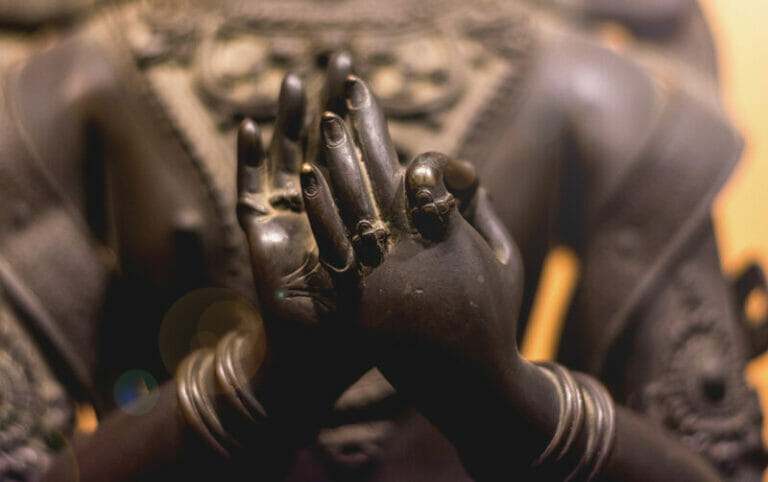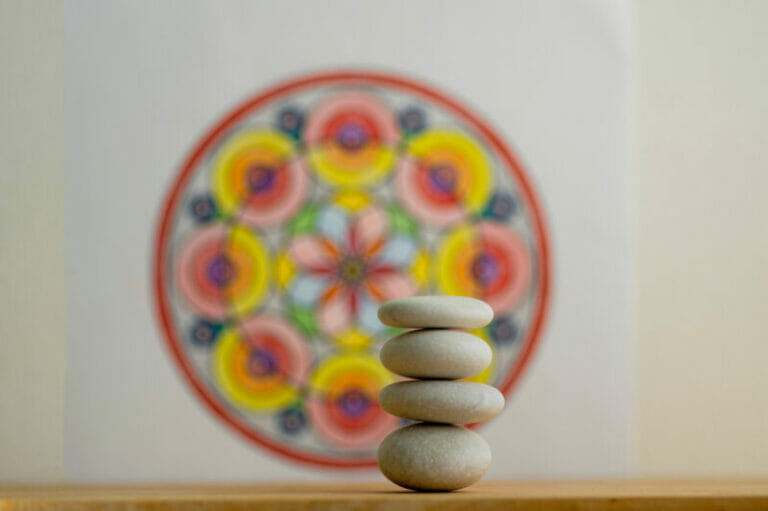Zen Meditation Techniques for Beginners: A Guide to Cultivating Mindfulness
You’re in the right spot if you’ve heard that Zen meditation can improve your mental and physical well-being. Originating from Buddhism, it focuses on cultivating awareness, insight, and compassion. But more than that, Zen meditation is a powerful practice that boosts immunity, brings peace of mind, eliminates depression, and connects oneself to something greater. In this guide, we’ll prepare you for Zen meditation, its key techniques, postures, and how to make it a part of your daily routine at home.
Understanding Zen Meditation

When understanding Zen for Beginners, remember that it isn’t just a routine—it’s a way to wake up to our true selves. In Zen tradition, meditation is the main ingredient that cooks up clear thinking and staying fully present. As we sit in silence, we learn to observe the breath and the mind, allowing thoughts to pass without attachment.
Key Points to Keep in Mind as We Begin:
- Posture: We start by adopting a stable, comfortable stance. This could be the traditional lotus, half-lotus position, or simply sitting flat on a cushion with our legs crossed.
- Breath: We focus on our breath, noticing the rise and fall of our diaphragm, which helps us anchor ourselves in the present moment.
- Mindfulness: We observe our thoughts without judgment, returning to our breath as a focal point whenever we find ourselves distracted.
Here are three essential aspects we must understand about Zen meditation:
- Simplicity: The practice is fundamentally simple – about being present here and now.
- Consistency: Regular practice is crucial; the continuous effort deepens our understanding and experience of Zen.
- Beginner’s Mind: Embracing a beginner’s mind is imperative, where we stay open to experience without the filter of preconceptions or expectations.
Starting Zen meditation for newbies is like beginning a transformative journey to understand ourselves and the world. Through its simplicity and discipline, we uncover the tranquility and insight inherent within all of us.
Preparing for Zen Meditation

Zen meditation for absolute beginners involves considering two factors. First, as a newbie, we need to set up a mindful environment for practice, and secondly, we must choose a time that aligns with our natural rhythm. Here’s a detailed outlook:
Choosing a Quiet Space
For our practice of Zen meditation at home, we should prioritize finding a quiet space that allows us to sit undisturbed. The area should be clear of clutter, which might distract the mind. Moreover, we should consider using cushions or a mat to facilitate a comfortable sitting position, sustaining an alert and relaxed posture.
Determining Time of Practice
The time we choose to meditate significantly affects our Zen practice. Mornings offer a serene start to the day, whereas evenings can help us reflect and unwind. But whatever time you choose, stick to a steady routine because consistency is crucial for enhancing your meditation journey.
Zen Meditation Techniques for Beginners

As a beginner, practicing Zen meditation techniques at home is easy. They don’t demand special skills or equipment. Here are two strategies you must observe:
Breathing Methods
The first technique in meditation is to prioritize the breath as our anchor to the present moment. A fundamental method is to count each breath. Here’s a simple structure to follow:
- Sit in a comfortable position with a straight back.
- Breathe naturally, and count each exhale starting from one.
- When reaching ten, start back at one again.
The breathing practice steadies concentration and eases us into Zen meditation. For those of us just beginning, it’s essential to focus on the act of breathing without attempting to control it. You can find more guidance about this in the detailed instructions: “Awakening is not a metaphor: the effects of Buddhist meditation practices on basic wakefulness.”
Mindfulness and Awareness
While doing breath-focused meditation, broaden mindfulness to embrace thoughts, sensations, and sounds. Don’t judge or push these experiences away.
Here’s what you can do to practice:
- Acknowledge each thought or sensation that arises.
- Note it mentally, and then return your focus to your breath.
Coming back to the present enhances our mindfulness. To develop this awareness, read texts tailored for beginners like “Zen Mind, Beginner’s Mind.”
Learn More: Zen Stories on Humility
Zen Sitting Positions for Beginners

Besides the techniques, Zen meditation positions for beginners are very important during practice. We typically start with three foundational positions: The Full Lotus, The Half Lotus, and The Seiza Position. Each serves as a gateway to cultivating a stable and attentive mind. Here’s how:
The Full Lotus
Place each foot on the opposite thigh in the Full Lotus position, creating a stable base. This posture serves as the traditional symbol of meditation and stability. However, it may be challenging for beginners due to the flexibility required.
- Positioning: Sit with your legs crossed and your feet resting on your opposite thighs.
- Benefits: Provides excellent stability for long periods of meditation.
The Half Lotus
The Half Lotus is easier, where we position one foot on the opposite thigh and let the other footrest underneath the opposite leg. This pose is also stable, like the Full Lotus.
- Positioning: Cross your legs and place one foot on the opposite thigh, with the other foot tucked under the other leg.
- Benefits: Easier than Full Lotus and ideal for those with less flexibility.
The Seiza Position
In the Seiza position, sit on heels with knees bent and resting on the floor. It’s an excellent alternative for those who find cross-legged positions uncomfortable.
- Positioning: Kneel on the floor and rest your buttocks on your heels with your hands on your thighs.
- Benefits: It relieves pressure on the legs and suits those with knee or hip issues.
Adopting these positions can create a solid foundation for Zen meditation practice. Every pose moves toward building a disciplined meditation routine that suits our physical abilities.
Read More: 14 Zen Fall Incense Burners You Should Know!
Incorporating Zen into Daily Life

For maximum benefits, integrate Zen meditation into your daily activities. This will bring calm and clarity to your busy routine. Here’s what a beginner must do:
Consistent Practice
Newbies to Zen meditation should make it a habit with a daily routine. Set aside a fixed time in the morning or evening, even ten minutes, for a start is excellent. Designate a dedicated meditation spot at home—a peaceful retreat, free from distractions—to enhance focus and consistency.
Integrating Mindfulness
Mindfulness means being fully aware of the present moment, and it easily fits into our daily activities. Whether eating, walking, or conversing, we can focus on being completely present, noticing our breath or bodily sensations. Here’s how we can integrate mindfulness:
- Breathing: Attune to the rhythm of our breath when waiting in line or pausing between tasks.
- Active Listening: Engage fully in listening during conversations, being present with the speaker.
- Mindful Eating: Savor each bite during meals, aware of the texture and flavor.
- Walking Mindfully: Feel the sensations in your feet with each step.
Doing these practices helps us see the joy and peace present in the simple moments of our lives.
Frequently Asked Questions
How can beginners integrate Zen meditation into their daily routine?
Pick a dedicated daily time for a successful Zen meditation routine, like morning or bedtime. Start with a few minutes and slowly extend the duration over time. Also, be consistent in regular practice. If you want insights into the core simplicity of Zen, check out “Zen Mind, Beginner’s Mind.”
In what ways does Zen meditation differ from other forms of meditation?
Zen meditation, or Zazen, focuses on seated meditation and mindfulness of breathing and posture. It highlights firsthand experience and observing the nature of reality, setting itself apart from other forms that may center on guided visualization or mantra concentration. This paper on Zen meditation and behavior self-control explores these distinct aspects further.
What types of Zen meditation music can enhance the practice for beginners?
Traditional Zen practice typically excludes music, but beginners might find soft, non-intrusive sounds like nature or slow-tempo music beneficial. The chosen music should enhance concentration without becoming the main focus. Therefore, opt for pieces that create a serene atmosphere suitable for Zen meditation.
Can Zen meditation be self-taught, and what resources are recommended for beginners?
Yes, you can learn Zen meditation on your own. Beginners can begin by exploring literature on Zen principles and straightforward meditation techniques. Resources like “How to Meditate” provide a step-by-step guide to mindfulness and meditation, catering to those unfamiliar with religious traditions. Consider joining a local Zen group or finding a Zen teacher for guidance and support.
Final Thoughts
Zen meditation techniques for beginners open a world of simplicity, discipline, and presence, showing a path to self-discovery. Breathe with awareness, create a serene space, choose your meditation time wisely, and adopt comfortable sitting positions. Whether you choose Full Lotus, Half Lotus, or a Seiza position, find what suits you best. Discover insight within and let Zen infuse your life with tranquility!








what is necessary to count breath?